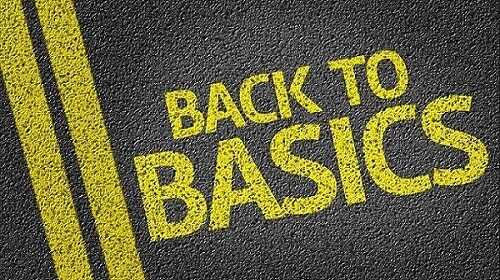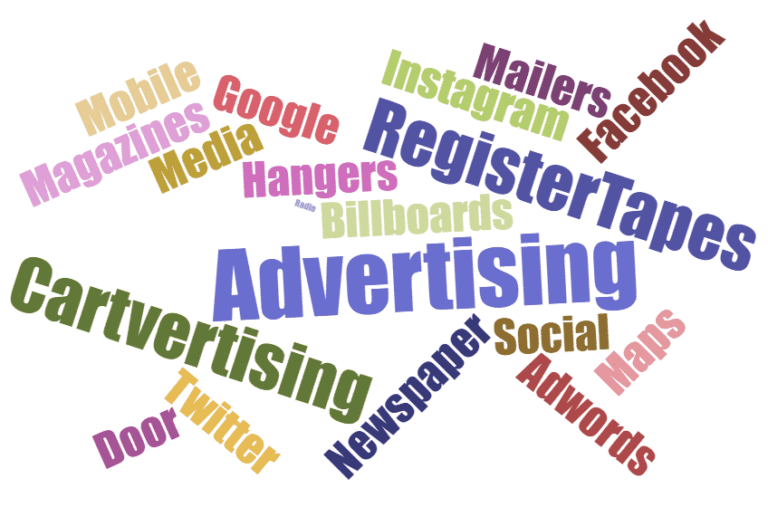5 Psychology Tricks for Grocery Store Advertising
You’re walking aimlessly around the grocery store in search of something for dinner. You’ve come unprepared and hungry, so you impulsively fill your basket with a variety of appealing options, from frozen French fries to a pint of ice cream. Sound familiar? You aren’t alone.
Most of us have wandered down the aisles of our local grocery store and spent more than what we’ve budgeted. In fact, supermarkets are actually designed to draw customers in and encourage them to purchase products they may or may not need.
From strategically placing products in areas that inspire consumers to buy to harnessing the power of coupon advertising, grocery store chains take numerous approaches to influence how consumers purchase their products.
To help illustrate how psychology and decision-making influences how consumers shop for groceries, consider these five tricks that businesses implement.
1. Decision Fatigue
Store organization and layout are both driving factors behind impulse buys. Perhaps one of the oldest tricks in the book is the fact that many grocery store chains place candy, magazines, and gum at the registers in an attempt to take advantage of analysis paralysis. In psychology, this is called “decision fatigue,” the idea that consumers tend to make irrational, impulsive decisions after a series of serious choices.
The more decisions your brain makes, the more fatigued your willpower becomes—and that’s why consumers sometimes reach for a Snickers bar at the end of their grocery shopping experience.
2. Environmental Factors
Ever noticed a welcoming, wafting smell of fresh-baked goods the minute you walk into a store? You aren’t crazy. In fact, flowers and items such as baked goods, bread, and cookies are often placed in the front of stores so that customers are greeted with pleasant-smelling aromas. This not only puts customers in a good mood upon entering the store, but it also entices them to relax, browse, and ultimately stay in the store for a longer period of time.
Similarly, many grocery chains pay careful attention to the music they play. Music that’s too fast can cause consumers to speed up their shopping, while slower music can influence them to take their time—and purchase more products.
3. Bulk Shopping and Club Cards
Recently ranked as the world’s seventh-largest retail company, Costco had 85 million members as of 2016. The huge retailer focuses on selling products at low prices—often at very high volume and in bulk packages—that are marketed to large families and businesses.
Costco’s members-only program not only creates proud, card-carrying members, but it builds customer loyalty. Costco also does not carry multiple brands or varieties when it is able to sell its house brand. Together, this reduces price and competition while increasing brand loyalty.
Not only are Costco members convinced they’re receiving the best deal, but the exclusive membership packages influence consumers into buying all their groceries (and then some) from Costco. And while Costco’s bulk pricing may ultimately result in savings, consumers are also consuming more than normal, which is what supermarkets want you to do in the first place.
4. Prestige Pricing
Prestige pricing occurs when consumers think they are buying a superior product because the price is higher. While higher prices sometimes do mean higher quality, other times, this is untrue. Think about it in the context of a supermarket experience. When consumers see a brand name or discounted product, their first reaction is to wonder what’s really wrong with it. And often, consumers will pass and pay full price for a related option.
Prestige pricing can be tied back to the concept of social proof, the idea that people buy, see, and recreate based on the actions of other people. According to Dr. Anna Akbari, sociologist and entrepreneur, prestige pricing often comes with celebrity endorsements and caters to a luxury lifestyle. By creating an upscale customer experience, brands are able to communicate with consumers’ emotions and sell more expensive products.
5. Coupon Advertising
Why pay full price for an item when you can save a couple dollars instead? One of the biggest misconceptions surrounding coupon advertising, however, is who actually uses them. While many assume that deal-hunters and coupon-clippers are the only ones looking for a bargain, it’s quite the contrary. In fact, according to a survey by Visa, 72 percent of Americans who earn at least $125,000 a year use coupons, compared to the national average of 65 percent.
Coupons impact happiness, health, and stress levels. In fact, recent research found that people who received a $10 voucher experienced a 38 percent rise in oxytocin levels and an 11 percent boost in happiness. Additionally, their respiration rates dropped 32 percent, their heart rates decreased by 5 percent, and their sweat levels on the palms of the hands were up to 20 times lower than those of peers who did not receive a coupon.
By catering to the social needs of consumers and influencing their happiness through coupon advertising, grocery stores leverage psychology to sell and promote products.




